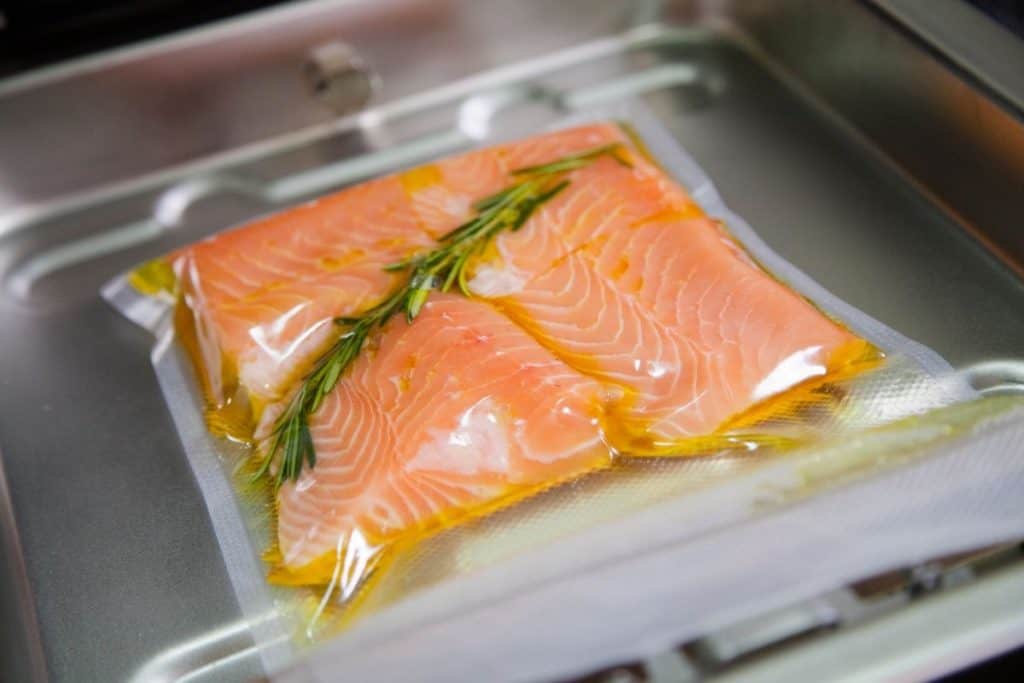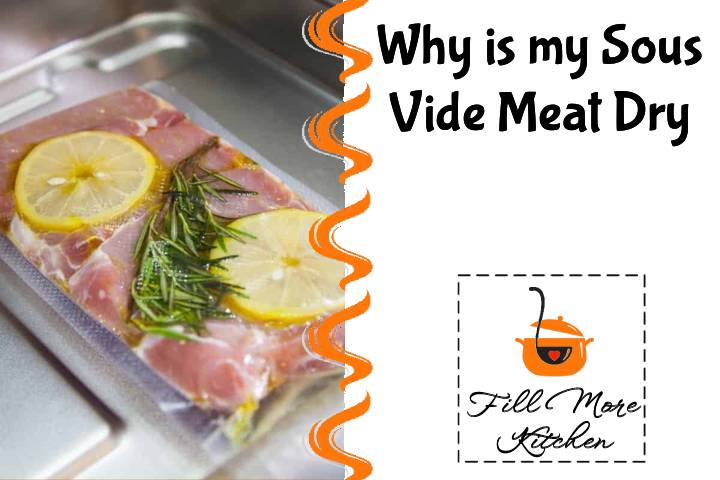Getting the perfect cook on your food can be difficult, as leaving it in the oven for too long can result in dry, overcooked meat, while not cooking it enough on the stovetop can lead to an undercooked disaster.
That’s why so many people choose the sous vide technique when preparing meals. It offers delicious, succulent dishes quickly and simply. But is it possible to overdo food with the sous vide method?
What is causing my sous vide meat to become dry?
Although it may be difficult to achieve, having dry sous vide meat is not entirely impossible, and some of the primary causes for this include:
- Leaving the meat in the water for an extended period can result in dryness when cooking with a sous vide method.
- After removing the meat, it continued to undergo cooking process
- The meat may have become dry because it was seared for an extended period.
If you are experiencing dry meats while attempting sous vide, then there is a problem occurring in your cooking process.
Fortunately, there are numerous uncomplicated solutions to assist you in achieving succulent meat during your next sous vide endeavor. This piece will explore the rationale behind your dehydrated meat and provide resolutions to this predicament.
Why Your Sous Vide Meat is Dry
One advantage of choosing sous vide, a cooking method that involves low temperature, is that it is highly unlikely to overcook your meal, and some chefs argue that it is entirely impossible to do so.
Regrettably, it has been demonstrated repeatedly that overcooking is feasible when utilizing the sous vide technique, despite being highly improbable.
Realizing that it’s hard to ruin a dish with sous vide is a great comfort for any cook who’s fed up with baking dry chicken cutlets in the oven. But if your poultry is still coming out tough even with sous vide cooking, what’s going on? Let’s explore the top 3 causes of dry meat:
1. You Leave Your Meat in the Sous Vide Machine or Bag for Too Long
Whether youâre cooking at a high or low temperature, you can overcook your food. Most of us know that when meats are left in the heat for too long, they will start to take on an unpleasant texture, and the same is true for meat thatâs been sitting in a sous vide water bath for too much time.
Two things occur when meat is left in sous vide water:
- Dry and unpleasant texture of the meat is inevitable.
- The meat could potentially have a soft and pulpy consistency.
In essence, what remains is a dish of food that is both dry and mushy, which is highly unappealing.
2. The Meat Continued to Cook After Being Taken Out
This is likely one of the most frequent causes of dry meat when using the sous vide technique. A lot of people think that once their meat has finished cooking in the water bath, they can take it out, let it cool for a few minutes, cut it up, and serve. However, this may result in a desiccated piece of meat.
When using the sous vide method, it’s important to keep in mind that the meat will still cook even after being removed from the water bath, so it’s highly advised to put the meat in an ice bath immediately to prevent further cooking, despite how unusual it may seem.
Are you aware that an ice bath is essential for eliminating bacteria? As Chef Director Chris Holland explains in “Can Sous Vide Overcook?“, since the meat isn’t cooked at a high temperature, some of the bacteria may not be destroyed.
However, by using an ice bath, you can guarantee the elimination of bacteria and present a succulent and damp meat to your guests that is both safe for consumption and free from bacteria.
3. You Are Over-Searing the Meat

It’s possible that you’re over-searing your sous vide meat, which can lead to it being overcooked. According to Erika Raws in her article “Sous Vide Cooking Mistakes That Can Get You in Hot Water,” it is easy to overcook a thinner cut of meat during the searing process.
While there are no strict guidelines for the thickness of meat in sous vide cooking, it is worth noting that meat cuts that are thinner are more prone to dryness.
This is because the searing process can make them tough and dry, and they can become overcooked fairly easily in the sous vide bag or machine.
While many chefs suggest using meat that is at least two inches thick, it is better to opt for larger cuts of meat when using the sous vide cooking technique.
Can You Overcook Chicken, Pork, and
Meat in a Sous Vide Machine?
It is possible to overcook any kind of meat in a sous vide device, which can happen if the instructions are not followed or if it is left on for an extended period.
It is important to be mindful when configuring your sous vide equipment, as all types of meat require different instructions. Let’s examine some of the typical timeframes, which are sourced from Cooking Times & Temperatures by Sous Vide Supreme:
- Tender beef, veal, and lamb cuts that are 1-inch thick require a cooking time of 1 to 4 hours.
- For a pork tenderloin with a thickness of 1.5 inches, the recommended cooking time is between 90 minutes and 7 hours.
- For optimal results, chicken breasts that are two inches thick should be cooked for a duration of 2.5 to 6 hours.
- Tuna and halibut that are 1 inch thick require a cooking time of 20 to 30 minutes.
In order to make sure your meat is cooked correctly with the sous vide technique, all you have to do, as per Sous Vide Basics, is:
- Ensure that the appropriate quantity of water is added to the sous vide machine.
- Before placing the meat in the bag, make sure to season it generously.
- Gently immerse your vacuum-sealed bag into the water.
- After cooking, give it a quick sear, being cautious not to overdo it.
- It is recommended to allow the meat to rest for a minimum of 20 to 30 minutes.
- Serve.
How Long Can You Leave Food in a Sous Vide
Cooker?
One of the main advantages of using the sous vide technique is that it’s less complicated than cooking with an oven or stovetop. Nevertheless, it’s still possible to overcook your meat if you leave it in for too long. When this happens, the meat becomes mushy and unpleasant to eat, and you might as well throw it away.
Although it is possible to leave your meat in the sous vide cooker for a little longer than the recommended time, it is highly recommended that you remove it from the cooker as soon as it’s done and transfer it directly into an ice bath for optimal outcomes.
Conclusion
While the sous vide cooking technique is known for producing moist and perfectly cooked meats, it is still possible to end up with dry meat due to leaving it in the machine for an extended period, not cooling it in an ice bath after cooking, or over-searing.
To avoid dry Sous Vide meat, it is important to adhere to the suggested cooking durations, opt for thicker steak cuts, and conclude the cooking process with an ice bath for both flavor and safety reasons.
You can also check this video about “Why is my Sous Vide Meat Dry? (Hereâs Why)”
Check out our top 10 reviews!
Related posts
https://fillmorekitchen.com/can-you-make-juice-with-frozen-fruit/
https://fillmorekitchen.com/how-do-you-know-when-a-pressure-cooker-is-done/
https://fillmorekitchen.com/can-you-eat-expired-candy/
https://fillmorekitchen.com/is-it-safe-to-put-a-plastic-bag-in-the-microwave/
https://fillmorekitchen.com/how-to-clean-your-oven-trays-effectively/



